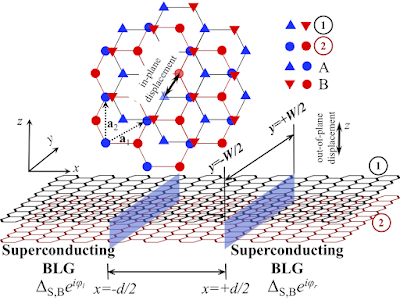Supercurrent diode effect, spin torques, and robust zero-energy peak in planar half-metallic trilayers
Klaus Halterman, Mohammad Alidoust, Ross Smith, Spencer Starr
Phys. Rev. B 105, 104508 (2022). [PDF]
We consider a Josephson junction with F1/F2/F3 ferromagnetic trilayers in the ballistic regime, where the magnetization in each ferromagnet Fi(i=1,2,3), can have arbitrary orientations and magnetization strengths. The trilayers are sandwiched between two s-wave superconductors with a macroscopic phase difference Δφ. A broad range of magnetization strengths of the central F2 layer are considered, from an unpolarized normal metal (N) to a half-metallic phase, supporting only one spin species. Our results reveal that when the magnetization configuration in F1/F2/F3 has three orthogonal components, a supercurrent can flow at Δφ=0, and a strong second harmonic in the current-phase relation appears. Upon increasing the magnetization strength in the central ferromagnet layer up to the half-metallic limit, the self-biased current and second harmonic component become dramatically enhanced, and the critical supercurrent reaches its maximum value. The higher harmonics in the current-phase relations can be controlled by the relative magnetization orientations, with negligible current damping compared to the corresponding F1/N/F3 counterparts. For a broad range of exchange field strengths in the central ferromagnet F2, the ground state of the system can be tuned to an arbitrary phase difference φ0 by rotating the magnetization in the outer ferromagnet F3. For intermediate exchange field strengths in F2, a φ0 state can arise that creates a superconducting diode effect, whereby Δφ can be tuned to create a one-way dissipationless current flow. The density of states demonstrates the emergence of zero energy peaks for the mutually orthogonal magnetization configurations, which is strongest in the half-metallic phase.
































